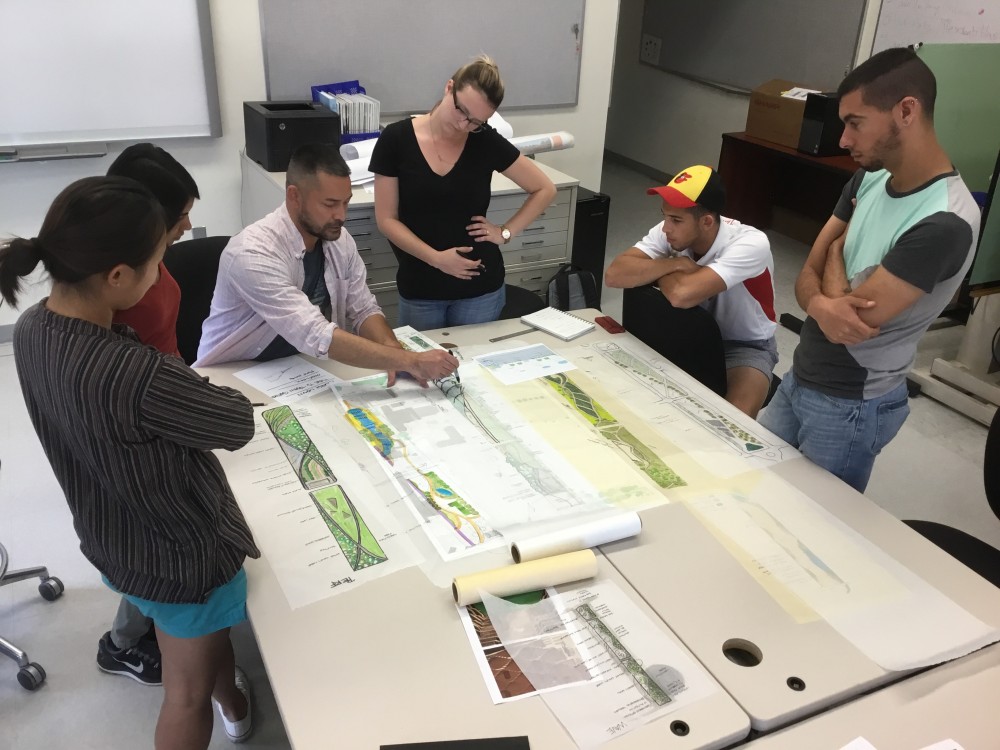A University of Maryland team won second place in a national competition for its plan to offset stormwater pollution that could result from Purple Line construction.
The Environmental Protection Agency’s annual Campus RainWorks Challenge calls on college students to design on-campus solutions to combat stormwater pollution, which occurs when falling rain collects chemicals or harmful nutrients from the ground before flowing into a larger waterway.
In the Master Plan category, which examines how green infrastructure can be integrated across the campus, the team won second place for its proposal to transform Lot 1 and Lot Z into a park that would reduce stormwater runoff and provide educational opportunities for the campus community.
[Read more: A UMD team wants to clean up an on-campus pond as part of an nationwide contest]
The second-place team — whose project is titled “Champion Gateway” — was composed of eight undergraduate and graduate students in a variety of fields such as landscape architecture and environmental science and technology, said Victoria Chanse, who served as one of the group’s faculty advisers. The group received a $1,000 student prize and a $2,000 faculty prize.
“You can take a run-of-the-mill approach to stormwater design, but having students working in a variety of disciplines is just really wonderful because we can then explore solutions from so many different perspectives,” said Chanse, a landscape architecture professor. “It’s a terrific opportunity for students, and I’m excited that we did so well.”
The team proposed that a park be created in Lot 1 and Lot Z — both of which are located near Knight Hall and will be impacted by Purple Line construction. The park would include open plazas, a Purple Line and pedestrian crossing and a bioretention facility, which removes contaminants from stormwater runoff using a grass buffer strip.
[Read more: 3-D printed oyster shells, other sustainability projects will receive university funding]
Impervious surfaces, such as concrete and asphalt, make it easier for pollutants to be carried from the ground into water systems when it rains. Soil or grass, however, can absorb polluted water before it has the chance to run off into larger bodies.
The goal is for the park — which would be split by the train — to provide education, research and recreational opportunities to the campus community and reduce increased stormwater runoff that will occur when the Purple Line arrives.
More than 350 trees would be added to the site, more than 200 pounds of carbon dioxide would be removed per year and runoff would be reduced by 52 percent, according to the proposal.
“Maryland is an extremely collaborative place and I suspect there are very few campuses that foster collaboration like this,” Chanse said. “It’s really easy for us to work with other disciplines and come up with these really innovative ideas.”
The project would eliminate the majority of the parking spaces in the area, according to the team’s project proposal.
The Purple Line is expected to take 7,000 cars off the road in the College Park area alone, College Park City-University Partnership Executive Director Eric Olson said in April. Jennifer Ren, a third-year landscape architecture graduate student on the team, said the development would have a positive impact on the campus community despite the potential for pollution.
“The Purple Line serves as a catalyst for the university to go from an automobile campus to a transit campus,” Ren said. “Even though there is a huge backlash when parking spaces are removed, we would be riding the wave to sustainability that the Purple Line already brings.”
This university has competed in all six Campus RainWorks competitions since it was initiated in 2012. In the past, teams have come in first place twice, second place twice and received an honorable mention twice.
While none of this university’s winning projects have ever been built, Chanse said she hopes the “Champion Gateway” is one day created.
This university’s American Ecological Engineering Society chapter also entered the competition and placed in the top eight for the demonstration category. They designed an algae scrubber system — a filtering device that grows algae to remove chemicals from the water — that would combat pollution in the small body of water near the Terrapin Trail Garage.
Senior environmental science and technology major Samantha Francis, part of the team, said the group plans to build the system by the end of next academic year.
“I am ecstatic that my club has participated in this and made it this far,” Francis said. “Once we build this for real, it’s going to open up really cool research opportunities.”



